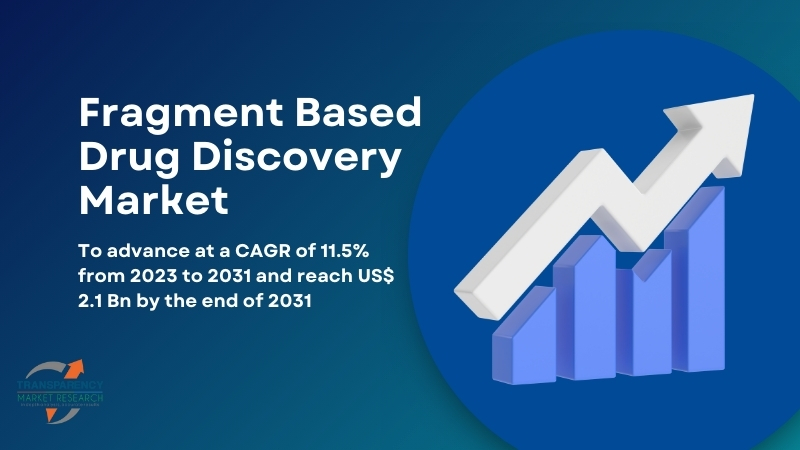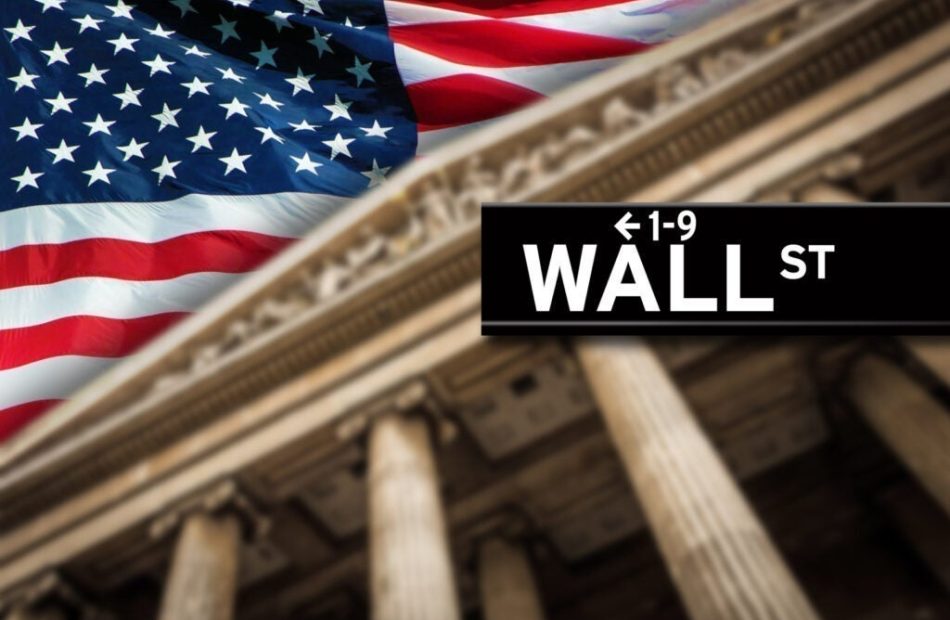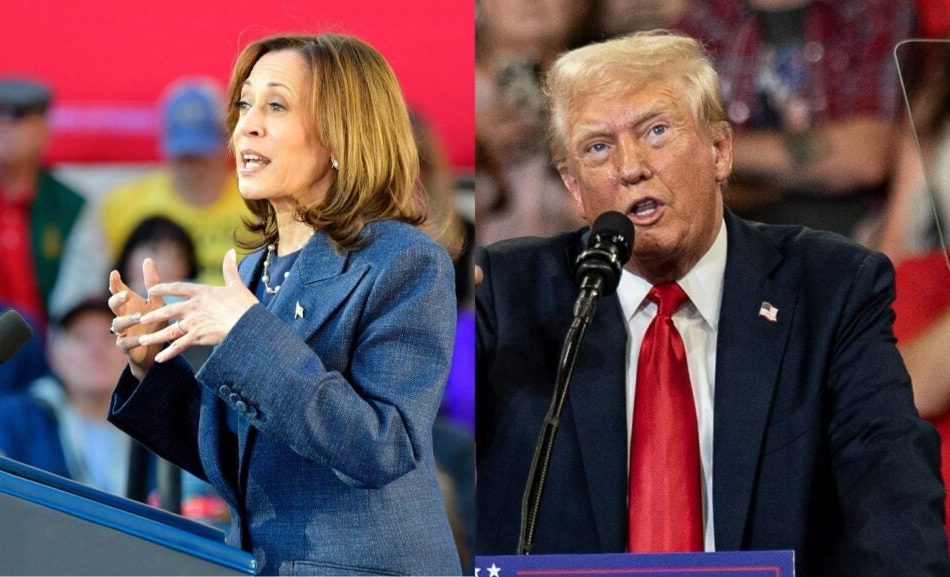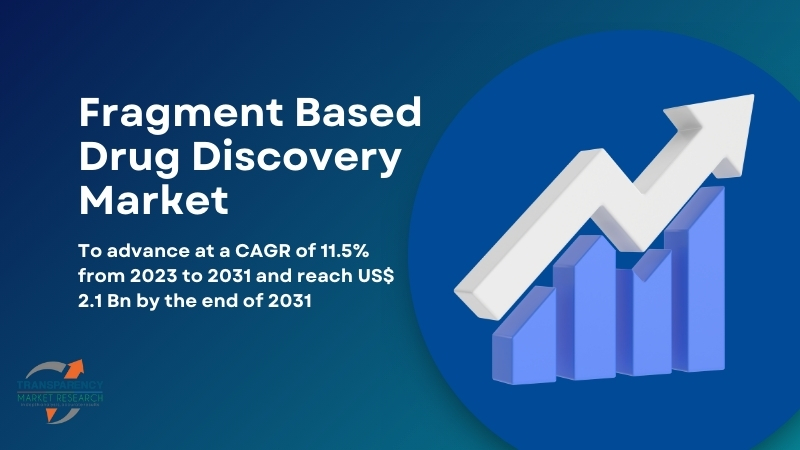Steel Dynamics Recent Insider Activity
A substantial insider sell was reported on October 28, by Chad Bickford, Vice President at Steel Dynamics STLD, based on the recent SEC filing.
What Happened: Bickford opted to sell 2,000 shares of Steel Dynamics, according to a Form 4 filing with the U.S. Securities and Exchange Commission on Monday. The transaction’s total worth stands at $269,720.
The latest market snapshot at Tuesday morning reveals Steel Dynamics shares up by 0.83%, trading at $136.85.
All You Need to Know About Steel Dynamics
Steel Dynamics Inc operates scrap-based steel minimills with roughly 16 million tons of annual steel production capacity. The company’s segment includes steel operations, metals recycling operations, steel fabrication operations, Aluminum Operations Segment, and others. It generates maximum revenue from the steel operations segment.
Unraveling the Financial Story of Steel Dynamics
Decline in Revenue: Over the 3 months period, Steel Dynamics faced challenges, resulting in a decline of approximately -6.28% in revenue growth as of 30 September, 2024. This signifies a reduction in the company’s top-line earnings. In comparison to its industry peers, the company trails behind with a growth rate lower than the average among peers in the Materials sector.
Holistic Profitability Examination:
-
Gross Margin: The company shows a low gross margin of 13.94%, indicating concerns regarding cost management and overall profitability relative to its industry counterparts.
-
Earnings per Share (EPS): Steel Dynamics’s EPS reflects a decline, falling below the industry average with a current EPS of 2.06.
Debt Management: Steel Dynamics’s debt-to-equity ratio is notably higher than the industry average. With a ratio of 0.41, the company relies more heavily on borrowed funds, indicating a higher level of financial risk.
Navigating Market Valuation:
-
Price to Earnings (P/E) Ratio: The current P/E ratio of 12.21 is below industry norms, indicating potential undervaluation and presenting an investment opportunity.
-
Price to Sales (P/S) Ratio: With a relatively high Price to Sales ratio of 1.2 as compared to the industry average, the stock might be considered overvalued based on sales performance.
-
EV/EBITDA Analysis (Enterprise Value to its Earnings Before Interest, Taxes, Depreciation & Amortization): With an impressive EV/EBITDA ratio of 8.19, Steel Dynamics demonstrates exemplary market valuation, surpassing industry averages.
Market Capitalization: Exceeding industry standards, the company’s market capitalization places it above industry average in size relative to peers. This emphasizes its significant scale and robust market position.
Now trade stocks online commission free with Charles Schwab, a trusted and complete investment firm.
Why Insider Activity Matters in Finance
Insider transactions serve as a piece of the puzzle in investment decisions, rather than the entire picture.
In legal terms, an “insider” refers to any officer, director, or beneficial owner of more than ten percent of a company’s equity securities registered under Section 12 of the Securities Exchange Act of 1934. This can include executives in the c-suite and large hedge funds. These insiders are required to let the public know of their transactions via a Form 4 filing, which must be filed within two business days of the transaction.
When a company insider makes a new purchase, that is an indication that they expect the stock to rise.
Insider sells, on the other hand, can be made for a variety of reasons, and may not necessarily mean that the seller thinks the stock will go down.
A Deep Dive into Insider Transaction Codes
Delving into transactions, investors typically prioritize those unfolding in the open market, as precisely outlined in Table I of the Form 4 filing. A P in Box 3 indicates a purchase, while S signifies a sale. Transaction code C signals the conversion of an option, and transaction code A denotes a grant, award, or other acquisition of securities from the company.
Check Out The Full List Of Steel Dynamics’s Insider Trades.
Insider Buying Alert: Profit from C-Suite Moves
Benzinga Edge reveals every insider trade in real-time. Don’t miss the next big stock move driven by insider confidence. Unlock this ultimate sentiment indicator now. Click here for access.
This article was generated by Benzinga’s automated content engine and reviewed by an editor.
Market News and Data brought to you by Benzinga APIs
© 2024 Benzinga.com. Benzinga does not provide investment advice. All rights reserved.
Tech Stocks Rise Ahead Of Key Earnings, Gold Smashes Records, Bitcoin Nears All-Time Highs: What's Driving Markets Tuesday?
Wall Street took a breather on Tuesday, with most major indices treading water, while tech stocks saw gains as investors braced for earnings reports from mega-cap companies.
The Nasdaq 100 rose 0.7%, buoyed by anticipation around upcoming earnings from Alphabet Inc. GOOGLGOOG and Advanced Micro Devices Inc. AMD, both set to report after market close.
Elsewhere, the S&P 500 was largely unchanged, the Dow Jones dipped slightly, and small-cap stocks underperformed.
In economic news, U.S. job openings dropped by 418,000 to 7.443 million in September 2024 — marking the lowest level since January 2021 and falling short of the market’s expectation of 7.99 million.
The Conference Board’s Consumer Confidence Index surged, posting its largest monthly gain since March 2021. This suggests that while labor demand may be slowing, consumer sentiment remains robust.
Treasury yields continued to climb during concerns over the U.S. budget deficit and political uncertainty ahead of next week’s elections. The yield on the 10-year Treasury note hit 4.33%, the highest level since early July.
Notably, gold prices remained resilient, with the precious metal breaking above the all-time high of $2,770 per ounce as investors sought a hard asset amid fiscal concerns.
The crypto market also saw notable gains. Bitcoin BTC/USD rose nearly 4% to reach $72,700, nearing its record high of $73,697 set in March. Dogecoin (CRYPTO: DOGE) continued its momentum with a 10% rally on Tuesday, following an 11% surge on Monday.
| Major Indices | Price | 1-day % change |
| Nasdaq 100 | 20,500.69 | 0.7% |
| S&P 500 | 5,831.03 | 0.1 % |
| Dow Jones | 42,272.72 | -0.3% |
| Russell 2000 | 2,226.40 | -0.8% |
According to Benzinga Pro data:
- The SPDR S&P 500 ETF Trust SPY inched 0.1% higher to $581.48.
- The SPDR Dow Jones Industrial Average DIA dipped 0.3% to $422.93.
- The tech-heavy Invesco QQQ Trust Series QQQ rose 0.7% to $498.73.
- The iShares Russell 2000 ETF IWM fell 0.7% to $221.01.
- The Technology Select Sector SPDR Fund XLK outperformed, up by 1.1%. The Utilities Select Sector SPDR Fund XLU lagged, down 1.7%.
Stocks reacting to earnings reports included:
- McDonalds Corp. MCD, down 0.4%,
- Pfizer Inc. PFE, down 1.7%,
- PayPal Holdings Inc. PYPL, down over 4%,
- Ecolab Inc. ECL, down 1%,
- Enterprise Product Partner L.P. EPD down 0.3%,
- Royal Caribbean Cruises Ltd. RCL up 3.5%,
- D.R. Horton DHI, down 8.6%,
- Phillips 66 PSX, down 3.9%,
- MSCI Inc. MSCI, down 1.5%,
- Corning Inc. GLW, up 7.8%,
- Ford Motor Co. F, down 8%,
- SoFi Technologies Inc. SOFI, down 6.3%,
- Incyte Corp. SWK, up 9.4%
Among large-cap companies slated to report earnings after the close are Alphabet, Advanced Micro Devices, Visa Inc. V, Stryker Corp. SYK, Chubb Ltd. CB, Mondelez International Inc. MDLZ, Chipotle Mexican Grill CMG and Electronic Arts Inc. EA.
Read Now:
Photo: Shutterstock
Market News and Data brought to you by Benzinga APIs
© 2024 Benzinga.com. Benzinga does not provide investment advice. All rights reserved.
Trump Vs. Harris: How Their Fiscal Plans Could Add Trillions To The US National Debt
As the 2024 U.S. presidential election approaches, the impact of each candidate’s fiscal policies on the national debt is drawing attention.
Both former President Donald Trump and Vice President Kamala Harris have proposed expansive tax and spending measures that would deepen the debt — already projected to reach a historic high in the coming years.
According to a recent analysis from the Committee for a Responsible Federal Budget (CRFB), neither candidate’s plan would place the debt on a sustainable trajectory, with estimates indicating that both would increase the debt by trillions through 2035.
See Also: Better Off With Harris? 42% Of Americans Say Yes, Outpacing Trump In Economic Trust
Trump’s Plan Adds An Estimated $7.75 Trillion In Debt
According to the CRFB’s central estimate, the twice-impeached ex-president would increase the national debt by $7.75 trillion between 2026 and 2035.
This increase would stem primarily from a combination of tax cuts for the wealthy and increased spending, offset partially by new tariffs and other spending reductions. Here’s a breakdown of his proposed measures:
- Deficit-Increasing Policies: Trump has proposed to extend parts of the 2017 Tax Cuts and Jobs Act (TCJA), which would cost $5.35 trillion. He also plans to cut individual and business taxes further, adding an estimated $3.75 trillion and $250 billion to the debt, respectively. Trump also calls for increased defense spending, about $400 billion, and heightened immigration enforcement, about $350 billion.
- Deficit-Reducing Policies: To offset some of these costs, Trump proposes to impose new tariffs on imports, projected to raise $2.7 trillion. However, experts say these tariffs will likely raise living costs by about 3 to 4 percent, disproportionately affecting middle- and lower-income families. Trump would also eliminate environmental and education-related expenditures (i.e., EV tax credits and the Department of Education).
- Interest Costs: These policy changes would lead to an estimated $1.05 trillion in additional interest costs over the period.
If Trump’s plan were implemented, the debt would reach 143% of GDP by 2035, an 18-point increase over the current law baseline.
Economists were already issuing warnings about Trump’s economic policies. Nobel winner Paul Krugman, for example, said Trump’s plans could rewind economic progress 90 years and ignite global conflict.
See Also: Renters Say Kamala Harris Beats Trump On Housing Affordability: 48% Choose The Vice President
Harris’s Plan Adds An Estimated $3.95 Trillion In Debt
Harris’s fiscal approach would increase the debt by $3.95 trillion between 2026 and 2035, according to the CRFB.
The Democratic nominee is focusing on expanding social safety nets and tax credits while imposing new taxes on corporations and high-income households to offset some of the additional spending.
- Deficit-Increasing Policies: Harris proposes a range of social and tax benefits, including expanded child tax credits, support for health care, Medicare, and housing, along with increased resources for education, child care, and paid leave. These measures would collectively add $7.65 trillion to the deficit over the period.
- Deficit-Reducing Policies: To mitigate the fiscal impact, Harris’s plan includes tax hikes on corporations and high-income earners, projected to raise $4 trillion. She also supports reducing prescription drug prices, estimated to save an additional $250 billion.
- Interest Costs: The additional interest costs under Harris’s plan are projected at $550 billion.
Under Harris’s fiscal framework, the debt-to-GDP ratio would rise to 134% by 2035, a 9-point increase from the current projection under existing laws.
Trump vs. Harris: Policy Proposals And Potential Impact On US Budget Deficits
| Policy Category | Harris Plan (2026-2035) | Trump Plan (2026-2035) |
|---|---|---|
| Extend/Modify TCJA | -$3,000 billion | -$5,350 billion |
| Individual Tax Cuts | -$1,600 billion | -$3,750 billion |
| Business Tax Cuts | -$250 billion | -$250 billion |
| Health Care & Long-Term Care | -$1,050 billion | -$150 billion |
| Defense Spending | N/A | -$400 billion |
| Paid Leave & Education | -$1,400 billion | N/A |
| Immigration & Border Security | -$100 billion | -$350 billion |
| Housing-Related Spending | -$250 billion | -$150 billion |
| Total Deficit-Increasing | -$7,650 billion | -$10,400 billion |
| Corporate/High-Income Taxes | +$4,000 billion | N/A |
| Tariffs | N/A | +$2,700 billion |
| Reduce Other Spending | +$250 billion | +$1,000 billion |
| Total Deficit-Reducing | +$4,250 billion | +$3,700 billion |
| Net Interest | -$550 billion | -$1,050 billion |
| Total Net Deficit Impact | -$3,950 billion | -$7,750 billion |
See Also: ‘Tariffs Are Inflationary’: IMF Deputy Chief Rejects Trump’s Trade Policies As Elections Loom
Wide Range Of Potential Outcomes
The CRFB analysis provides both low- and high-cost scenarios for each candidate’s plan, reflecting the uncertainty inherent in long-term fiscal projections.
- Harris Plan: In the low-cost scenario, her policies would add $300 billion to the debt by 2035, while the high-cost estimate reaches $8.3 trillion.
- Trump Plan: The range for Trump is even wider, with a low-cost estimate adding $1.65 trillion and a high-cost estimate pushing the debt up by $15.55 trillion.
Market And Economic Implications
The rising expectations for a larger budget deficit and ballooning national debt are already having a direct impact on financial markets, with Treasury yields surging significantly in recent weeks.
As the U.S. government gears up to fund the electoral promises of either candidate, it will likely need to increase Treasury issuance in the future. This worsening fiscal outlook is leading investors to demand a higher risk premium, which, in turn, pushes up Treasury yields.
Higher yields on government bonds drive up a range of interest rates across the broader economy and financial markets. For example, mortgage rates tend to track long-term Treasury yields closely, meaning homebuyers are likely to face more expensive borrowing costs.
Similarly, interest rates on loans for businesses and consumers will also rise, affecting investments and spending.
The deteriorating fiscal fundamentals and the staggering interest costs on U.S. debt—already exceeding $1 trillion annually—risk putting the Federal Reserve in a challenging position.
Rising fiscal deficits can contribute to inflationary pressures, especially if the economy continues to grow and the labor market remains strong.
In response, the Fed may feel compelled to raise interest rates to control inflation, but doing so in the context of high national debt could further escalate the government’s interest expenses, adding strain to the federal budget.
Every rate hike risks exacerbating the debt burden by inflating interest payments on government debt, which already consume a substantial portion of federal revenue.
If investors start to perceive a more accommodative stance from the Federal Reserve regarding the government’s fiscal needs, there could be a rush toward “hard assets” like gold. Gold is often seen as a safe haven in scenarios where policymakers tolerate higher inflation.
Though this scenario may still seem distant, there are signs that investors are beginning to price it in.
Gold prices, as tracked by the SPDR Gold Trust SPY, have rallied to record highs in October, despite the sharp rise in Treasury yields, breaking a typical inverse relationship. This could signal growing market anticipation of a shift in policy priorities if fiscal pressures continue to mount.
Now Read:
Image: Shutterstock
© 2024 Benzinga.com. Benzinga does not provide investment advice. All rights reserved.
US Consumer Confidence Rises Strongly In October: Stock Market Sentiment Hits New Highs
Consumer confidence in the U.S. economy soared in October, marking the strongest month-over-month increase since March 2021, according to the Conference Board’s latest report.
The Consumer Confidence Index jumped to 108.7, up significantly from 99.2 in September and well above economist expectations of 99.5, as tracked by TradingEconomics.
Confidence Index Rises, Driven By Broader Optimism
The Conference Board’s Consumer Confidence Index, a key gauge of economic sentiment, rose by nearly 10 points in October to reach 108.7. This increase was fueled by improvements across both major components of the index.
The Present Situation Index rose from 123.8 in September to 138.0 in October, as consumers viewed current business and labor market conditions more favorably.
The Expectations Index increased from 82.8 to 89.1, moving further away from the recession-warning threshold of 80.
Dana M. Peterson, chief economist at The Conference Board, highlighted the significance of October’s gains, stating, “Consumer confidence recorded the strongest monthly gain since March 2021, but still did not break free of the narrow range that has prevailed over the past two years.”
See Also: Better Off With Harris? 42% Of Americans Say Yes, Outpacing Trump In Economic Trust
Labor Market Sentiment And Business Conditions Improve
In October, more consumers reported positive views on both business conditions and job availability. The survey found:
- 21.4% of respondents described business conditions as “good,” up from 18.6% in September.
- Those viewing conditions as “bad” decreased to 16.4% from 20.5% the previous month.
Labor market sentiment also showed noticeable improvement:
- 35.1% of consumers reported that jobs were “plentiful,” up from 31.3% in September.
- The share describing jobs as “hard to get” dropped to 16.8% from 18.6%.
According to Peterson, “Consumers’ assessments of current business conditions turned positive. Views on the current availability of jobs rebounded after several months of weakness, potentially reflecting better labor market data.”
Optimism About Future Economic Prospects Gains Traction
October’s confidence gains were broad-based, with optimism evident across all age groups and most income levels.
Consumers aged 35-54 saw the sharpest rise in confidence, while households earning over $100,000 remained the most optimistic on a six-month moving average basis.
Peterson highlighted a notable shift in consumer sentiment around recession risks, stating, “The proportion of consumers anticipating a recession over the next 12 months dropped to its lowest level since the question was first asked in July 2022.”
Mixed Signals On Inflation, Interest Rates, Strong Sentiment On Stocks
Despite signs of easing inflation, consumer expectations for price increases in the year ahead nudged slightly higher.
Average 12-month inflation expectations rose to 5.3% in October from 5.2% in September. This increase could reflect persistent pressures on food and services prices, even as gas prices and overall inflation have slowed.
Consumers were also cautious about interest rates:
- 47.5% of respondents expect interest rates to rise in the next 12 months, reversing a four-month decline in rate hike expectations.
- The share anticipating lower rates dropped to 30.3%.
Meanwhile, “consumers became more upbeat about the stock market: 51.4% of consumers expected stock prices “to increase over the year ahead, the highest reading since the question was first asked in 1987,” the Conference Board wrote.
On Tuesday, the S&P 500 Index — as tracked by the SPDR S&P 500 ETF Trust SPY — closed 0.2% higher, hovering at a less than one percentage point distance from its record highs set earlier this month.
Political Concerns Fade as Economic Issues Dominate
Interestingly, October’s survey showed a decline in consumer concerns around politics, even as the November elections approach.
“Election” ranked fifth among top concerns, trailing behind issues like prices, inflation, food, and groceries. This marks a stark contrast to previous election years; in October 2016, “election” was the most mentioned topic, and in October 2020, it was second only to COVID.
Now Read:
Market News and Data brought to you by Benzinga APIs
© 2024 Benzinga.com. Benzinga does not provide investment advice. All rights reserved.
Fragment Based Drug Discovery Market Size Projected to Achieve USD 2.1 Billion by 2031, Expanding at a 11.5% CAGR | Analysis by Transparency Market Research, Inc.
Wilmington, Delaware, United States, Transparency Market Research, Inc. , Oct. 29, 2024 (GLOBE NEWSWIRE) — As per the report published by Transparency Market Research, the fragment based drug discovery market (단편 기반 신약 발견 시장) was worth US$ 795.4 Mn in 2022 and is expected to reach US$ 2.1 Billion by the year 2031 at a CAGR of 11.5 % between 2023 and 2031.
Fragment-Based Drug Discovery (FBDD) is an innovative and increasingly popular approach in early-stage drug development. Unlike traditional high-throughput screening (HTS), which focuses on large and complex molecules, FBDD involves screening small, low molecular weight fragments as the starting point for drug discovery. These fragments interact with target proteins, offering crucial insights into binding characteristics and serving as the foundation for lead optimization.
Request a PDF Sample of this Report Now!
https://www.transparencymarketresearch.com/sample/sample.php?flag=S&rep_id=4741
FBDD presents several key advantages over conventional methods, including enhanced chemical diversity, higher hit rates, and the ability to target challenging proteins that are often difficult to address through traditional approaches. This method is particularly valuable in drugging targets with shallow binding sites or novel allosteric sites, making it a promising tool for tackling diseases with limited therapeutic options. As a result, FBDD is gaining traction within the pharmaceutical industry as a preferred strategy for generating novel drug candidates.

Key Players in Fragment Based Drug Discovery Market
Alveus Pharmaceuticals Pvt. Ltd., Astex Pharmaceuticals, Charles River Laboratories International, Inc., Beactica AB, Emerald BioStructures, Inc., Crown Bioscience, Inc., Evotec AG, Proteros Fragments GmbH, Kinetic Discovery Limited, Sprint Bioscience, Sygnature Discovery AND Structure Based Design, Inc. are some of the leading players.
Fragment Based Drug Discovery Market: A Sneak Peek
The Fragment-Based Drug Discovery (FBDD) market is witnessing robust growth, driven by its increasing adoption in pharmaceutical and biotechnology companies for early-stage drug development. FBDD’s ability to efficiently identify starting points for drug design by screening small, low-molecular-weight fragments has made it a preferred alternative to traditional high-throughput screening (HTS).
Its versatility in addressing challenging biological targets, such as proteins with shallow binding pockets or allosteric sites, has further positioned FBDD as a valuable tool in drug discovery, especially in areas like cancer, infectious diseases, and neurodegenerative disorders. One of the primary growth drivers of the FBDD market is the growing need for innovative and efficient drug discovery approaches. Traditional methods, including HTS, often face challenges such as low hit rates, limited chemical diversity, and the inability to target difficult-to-drug proteins. FBDD offers a more efficient exploration of chemical space, using smaller libraries of fragments while still covering a wide range of chemical diversity. The method’s ability to rapidly generate hit compounds with better drug-like properties, such as solubility and bioavailability, has fueled its adoption across the pharmaceutical industry, where time and cost efficiency are critical in drug development.
The successful development of fragment-derived drugs reaching late-stage clinical trials and regulatory approvals is another key driver of fragment based drug discovery market growth. For instance, Vemurafenib used to treat melanoma, and Venetoclax, for leukemia, are both – derived from fragment-based discovery and have demonstrated the method’s effectiveness in producing viable therapeutic agents.
These successes have encouraged further investment in FBDD platforms, leading to expanded use in drug discovery pipelines. Pharmaceutical companies are recognizing the potential of FBDD to address previously undruggable targets, creating a positive outlook for market growth.
The FBDD market is expected to grow significantly in the upcoming period, driven by advances in screening technologies, such as X-Ray crystallography, NMR, and molecular modeling, which enhance fragment identification and optimization. Additionally, the increasing demand for precision medicine and the focus on tackling complex diseases will further propel the adoption of FBDD in the drug discovery process. As the method continues to demonstrate its potential in delivering successful therapeutic candidates, more companies are expected to integrate FBDD into their R&D processes, bolstering the market’s expansion.
Unlock Growth Potential in Your Industry! Download PDF Brochure: https://www.transparencymarketresearch.com/sample/sample.php?flag=S&rep_id=4741
Fragment-Based Drug Discovery Market Regional Insights
• North America dominated the market share in 2022
The Fragment-Based Drug Discovery (FBDD) market in North America is experiencing substantial growth, driven by multiple factors, including the region’s advanced research infrastructure, strong presence of pharmaceutical and biotechnology companies, and increased focus on innovative drug discovery techniques. North America, particularly the United States, is a global leader in drug discovery and development, making it a key region for the adoption of cutting-edge approaches like FBDD.
One of the key factors driving the FBDD market in North America is the significant investment in research and development (R&D) by pharmaceutical companies, academic institutions, and research organizations. The region’s commitment to innovation is supported by the availability of advanced technologies, such as X-Ray crystallography, nuclear magnetic resonance (NMR), and surface plasmon resonance (SPR), which are crucial for fragment screening and optimization.
These tools enable more accurate identification of fragment hits and provide detailed structural information for the development of highly selective drug candidates. The continuous investment in high-end infrastructure and drug discovery platforms enhances the region’s capacity to adopt and expand FBDD practices.
Fragment Based Drug Discovery Market Segmentation
- Component
- Fragment Screening
- Biophysical Techniques
- NMR Spectroscopy
- Differential Scanning Fluorimetry (DSF) Assay
- Fluorescence Polarization
- Isothermal Titration Calorimetry
- X-ray Crystallography
- Surface Plasmon Resonance (SPR)
- Bilayer Interferometry
- Mass Spectrometry (MS)
- Capillary Electrophoresis
- Weak Affinity Chromatography (WAC – HPLC-UV/MS)
- Other assays (biochemical)
- Non-biophysical Techniques
- Biophysical Techniques
- Fragment Optimization
- Fragment Screening
- Application
- Oncology
- Central Nervous System (CNS) Disorders
- Infectious Diseases
- Cardiovascular Diseases
- Metabolic Disorders
- Inflammation & Autoimmune Diseases
- End-user
- Academic & Research Institutions
- Pharmaceutical & Biotechnology Companies
- Contract Research Organizations (CROs)
Buy this Premium Research Report: https://www.transparencymarketresearch.com/checkout.php?rep_id=4741<ype=S
More Trending Reports by Transparency Market Research –
- Infant Resuscitators Market – The global infant resuscitators market (유아 소생기 시장) was valued at US$ 253.1 million in 2022. It is projected to grow at a compound annual growth rate (CAGR) of 5.2% from 2023 to 2031, reaching over US$ 401.4 million by the end of 2031.
- Mechanical Thrombectomy Devices Market – The mechanical thrombectomy devices market (기계적 혈전제거 장치 시장) was valued at US$ 1.1 billion in 2022. It is expected to grow at a CAGR of 6.4% from 2023 to 2031, reaching over US$ 1.8 billion by the end of 2031.
- Sanitization Robots Market – The sanitization robots market (위생 로봇 시장) was valued at US$ 927.3 million in 2022. It is projected to advance at an impressive CAGR of 19.2% from 2023 to 2031, reaching over US$ 4.8 billion by 2031.
About Transparency Market Research
Transparency Market Research, a global market research company registered at Wilmington, Delaware, United States, provides custom research and consulting services. Our exclusive blend of quantitative forecasting and trends analysis provides forward-looking insights for thousands of decision makers. Our experienced team of Analysts, Researchers, and Consultants use proprietary data sources and various tools & techniques to gather and analyses information.
Our data repository is continuously updated and revised by a team of research experts, so that it always reflects the latest trends and information. With a broad research and analysis capability, Transparency Market Research employs rigorous primary and secondary research techniques in developing distinctive data sets and research material for business reports.
Contact:
Transparency Market Research Inc.
CORPORATE HEADQUARTER DOWNTOWN,
1000 N. West Street,
Suite 1200, Wilmington, Delaware 19801 USA
Tel: +1-518-618-1030
USA – Canada Toll Free: 866-552-3453
Website: https://www.transparencymarketresearch.com
Email: sales@transparencymarketresearch.com
Follow Us: LinkedIn| Twitter| Blog | YouTube

© 2024 Benzinga.com. Benzinga does not provide investment advice. All rights reserved.
Brunswick Director Trades Company's Stock
Joseph W McClanathan, Director at Brunswick BC, executed a substantial insider sell on October 28, according to an SEC filing.
What Happened: McClanathan’s decision to sell 4,745 shares of Brunswick was revealed in a Form 4 filing with the U.S. Securities and Exchange Commission on Monday. The total value of the sale is $380,264.
The latest update on Tuesday morning shows Brunswick shares down by 1.39%, trading at $80.91.
Discovering Brunswick: A Closer Look
Brunswick is a leading manufacturer in the marine recreation industry. The firm has more than 60 brands delivering products across propulsion (outboard, sterndrive, and inboard engines, propulsion-related controls, rigging, and propellers), parts, accessories, and technology, and boats (including well-known brands like Boston Whaler and Sea Ray). It also owns numerous Freedom Boat Club (shared ownership) locations as well as Boateka, which facilitates transactions in the used boat market. Brunswick’s focus surrounds building the innovative marine and recreational experiences, technologies, and connections supported by quality and innovation.
Key Indicators: Brunswick’s Financial Health
Revenue Growth: Brunswick’s revenue growth over a period of 3 months has faced challenges. As of 30 September, 2024, the company experienced a revenue decline of approximately -11.82%. This indicates a decrease in the company’s top-line earnings. When compared to others in the Consumer Discretionary sector, the company faces challenges, achieving a growth rate lower than the average among peers.
Exploring Profitability:
-
Gross Margin: The company issues a cost efficiency warning with a low gross margin of 26.15%, indicating potential difficulties in maintaining profitability compared to its peers.
-
Earnings per Share (EPS): Brunswick’s EPS is notably higher than the industry average. The company achieved a positive bottom-line trend with a current EPS of 0.67.
Debt Management: The company faces challenges in debt management with a debt-to-equity ratio higher than the industry average. With a ratio of 1.26, caution is advised due to increased financial risk.
Financial Valuation Breakdown:
-
Price to Earnings (P/E) Ratio: The Price to Earnings ratio of 19.13 is lower than the industry average, indicating potential undervaluation for the stock.
-
Price to Sales (P/S) Ratio: The Price to Sales ratio is 1.03, which is lower than the industry average. This suggests a possible undervaluation based on sales performance.
-
EV/EBITDA Analysis (Enterprise Value to its Earnings Before Interest, Taxes, Depreciation & Amortization): The company’s EV/EBITDA ratio 9.9 is below the industry average, indicating that it may be relatively undervalued compared to peers.
Market Capitalization Analysis: The company’s market capitalization surpasses industry averages, showcasing a dominant size relative to peers and suggesting a strong market position.
Now trade stocks online commission free with Charles Schwab, a trusted and complete investment firm.
Why Pay Attention to Insider Transactions
While insider transactions provide valuable information, they should be part of a broader analysis in making investment decisions.
In the context of legal matters, the term “insider” refers to any officer, director, or beneficial owner holding more than ten percent of a company’s equity securities, as outlined by Section 12 of the Securities Exchange Act of 1934. This includes executives in the c-suite and significant hedge funds. Such insiders are obligated to report their transactions through a Form 4 filing, which must be completed within two business days of the transaction.
Pointing towards optimism, a company insider’s new purchase signals their positive anticipation for the stock to rise.
Despite insider sells not always signaling a bearish sentiment, they can be driven by various factors.
Cracking Transaction Codes
When dissecting transactions, the focal point for investors is often those occurring in the open market, meticulously detailed in Table I of the Form 4 filing. A P in Box 3 denotes a purchase, while S signifies a sale. Transaction code C indicates the conversion of an option, and transaction code A denotes a grant, award, or other acquisition of securities from the company.
Check Out The Full List Of Brunswick’s Insider Trades.
Insider Buying Alert: Profit from C-Suite Moves
Benzinga Edge reveals every insider trade in real-time. Don’t miss the next big stock move driven by insider confidence. Unlock this ultimate sentiment indicator now. Click here for access.
This article was generated by Benzinga’s automated content engine and reviewed by an editor.
Market News and Data brought to you by Benzinga APIs
© 2024 Benzinga.com. Benzinga does not provide investment advice. All rights reserved.
Cognizant Collaborates with Alnylam as Technology Services Partner to Scale IT Operations
Utilizing Cognizant’s top-tier managed services frameworks and tools, the partnership aims to enhance Alnylam’s automation and reduce operational efforts
TEANECK, N.J., Oct. 29, 2024 /PRNewswire/ — Cognizant CTSH announced today a new agreement with Alnylam Pharmaceuticals, Inc., a leading biopharmaceutical company and the pioneer in RNA interference (RNAi) therapeutics. Cognizant will serve as an integral IT Managed Services provider for Alnylam. This collaboration aims to scale Alnylam’s IT operations and accelerate its capabilities in delivering transformative medicines.
Cognizant has been selected as the technology partner responsible for managing Alnylam’s global infrastructure and operations, cloud, security, platforms, applications, and advanced data analytics. Leveraging Cognizant’s managed services frameworks and tools, the collaboration aims to improve automation, reduce operational efforts, and ensure transparency in business decisions and unified performance accountability.
“By leveraging Cognizant’s expertise in the life sciences sector and innovative managed services frameworks, we will aim to accelerate our business outcomes and ultimately improve customer experiences,” said Larry Egan, Vice President of Strategic Technologies at Alnylam.
Thirty of the top global pharmaceutical companies work with Cognizant to implement and manage advanced technology solutions, enabling them to bring their innovative drugs to market, run global supply chains and manufacturing systems, and comply with complex regulations.
“We are thrilled to partner with Alnylam on its IT transformation journey,” said Cognizant’s Mohammad Haque, SVP, Global Large Deals Lead and BU Head, Life Sciences. “We will bring our extensive experience with large pharmaceutical companies, along with investments in AI, to accelerate Alnylam’s business goals. As a strategic partner, we look forward to helping Alnylam grow its business and continue delivering transformative medicines to treat both rare and prevalent diseases.”
About Cognizant
Cognizant CTSH engineers modern businesses. We help our clients modernize technology, reimagine processes and transform experiences so they can stay ahead in our fast-changing world. Together, we’re improving everyday life. See how at www.cognizant.com or @cognizant.
Contact:
Natalie Steffen
Natalie.Steffen@cognizant.com
![]() View original content to download multimedia:https://www.prnewswire.com/news-releases/cognizant-collaborates-with-alnylam-as-technology-services-partner-to-scale-it-operations-302290305.html
View original content to download multimedia:https://www.prnewswire.com/news-releases/cognizant-collaborates-with-alnylam-as-technology-services-partner-to-scale-it-operations-302290305.html
SOURCE Cognizant Technology Solutions
Market News and Data brought to you by Benzinga APIs
© 2024 Benzinga.com. Benzinga does not provide investment advice. All rights reserved.
Blue222 Strengthens Leadership Team with Eric Craig as CEO and announces a $4 Million Capital Raise.
Louisville, KY, Oct. 29, 2024 (GLOBE NEWSWIRE) — Blue222, Inc. is excited to announce that Eric Craig has joined the company as the new CEO, while Alan Grosheider has transitioned to a Founder/Chairman role. Blue222 is a cutting-edge online platform revolutionizing the $92 billion real estate inspection industry by automating and streamlining the traditionally manual processes of matching, bidding, and scheduling.
Alan co-founded Blue222 and has served as CEO since its inception. Under his leadership, Blue222 developed its core platform and technology solutions, expanded its client base, and built a nationwide network of inspection professionals, laying a solid foundation for future growth.
Eric brings extensive experience in building and scaling online marketplace businesses, having held executive roles at Orbitz and Groupon, where he contributed to their growth into multi-billion-dollar enterprises. He also led revenue, operations, and analytics teams at Orbitz, Groupon, TrueCar, and United Airlines.
After meeting Alan late last year, Eric realized the huge potential for technology improvements in the $4 trillion per year real estate industry. Due diligence inspections are a critical part of every real estate transaction, but they’re also the most manual and time-consuming. Blue222 has the potential to improve this workflow for the entire industry. Eric officially joined Blue222 as CEO in September 2024.
Combining Eric’s online marketplace expertise and Alan’s experience in real estate inspections, software building, and early-stage startups perfectly positions Blue222 for success as an innovative modern marketplace with platform solutions that improve workflows for the smallest to the largest players in the industry.
“I want to congratulate Alan for identifying the opportunity to modernize this industry and his perseverance in bringing it to fruition. I’m excited to be part of the Blue222 team and look forward to leading our mission to transform the real estate transaction experience,” said Eric.
In conjunction with these changes, Blue222, Inc. has initiated a $4 million Reg. D capital raise to fuel our growth and innovation. Aligned with our commitment to building cutting-edge marketplace technology, we’re utilizing modern online platforms to make equity ownership in Blue222 more accessible with reasonable minimum investments. We invite accredited investors to join us as we continue our journey to revolutionize real estate inspections.
For those interested in joining Blue222’s mission to transform the real estate experience, please visit https://blue222.com/invest to learn more.

Eric Craig CEO Blue222 312-405-9494 eric.craig-at-blue222.com
Market News and Data brought to you by Benzinga APIs
© 2024 Benzinga.com. Benzinga does not provide investment advice. All rights reserved.









